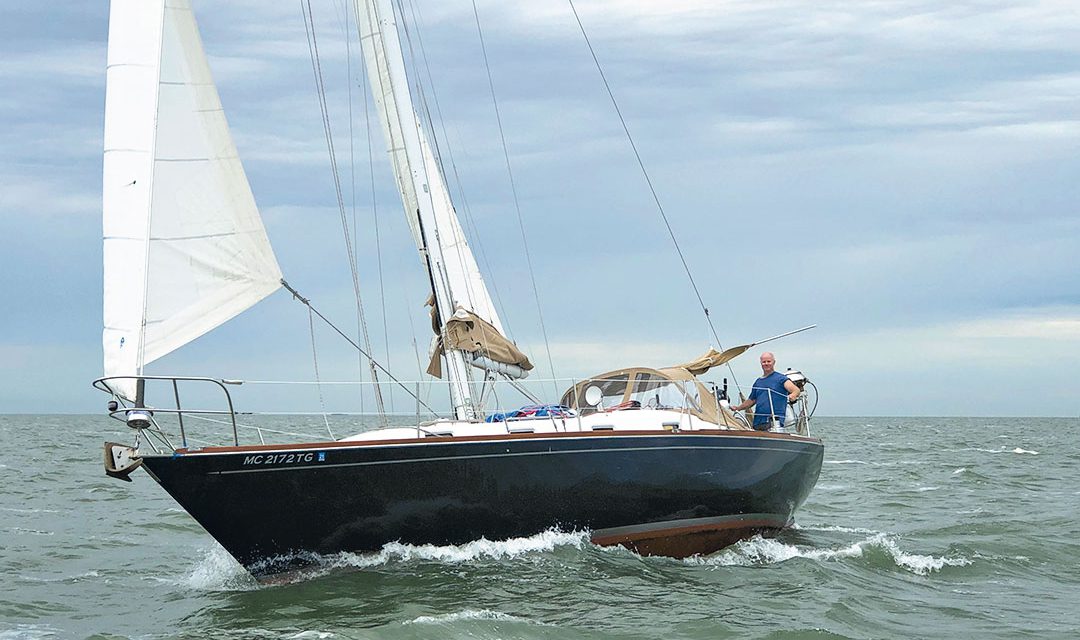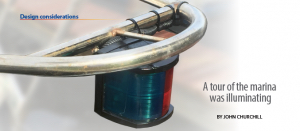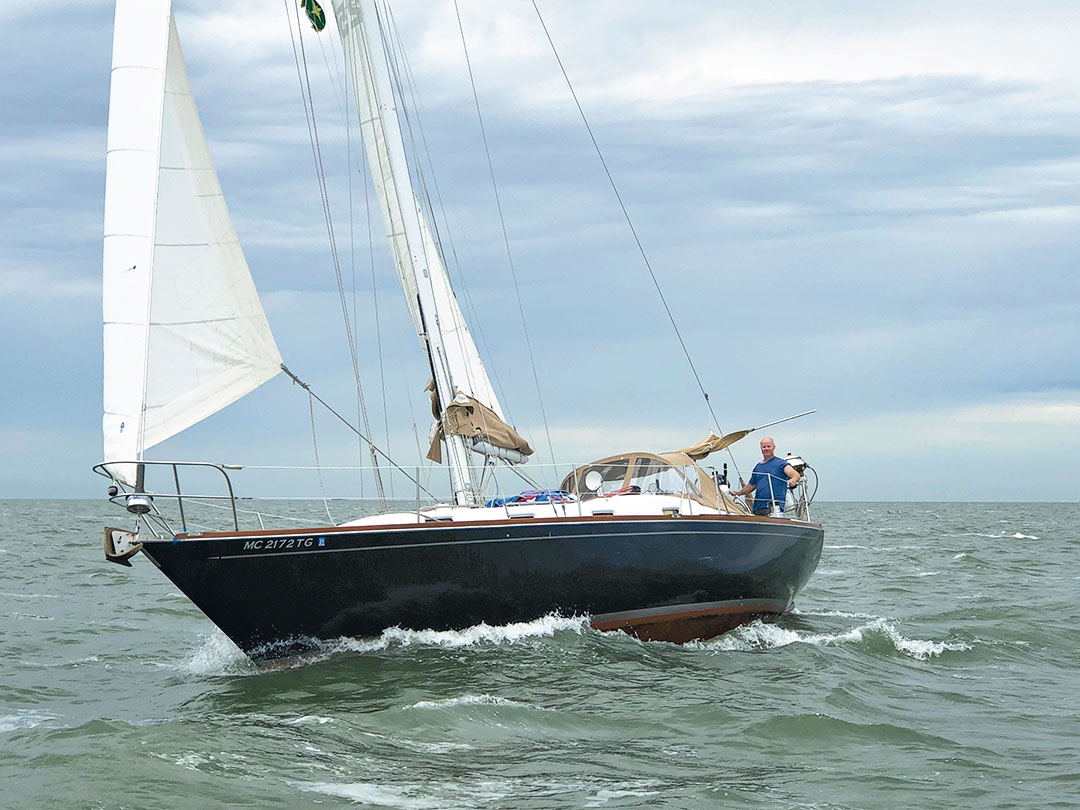
An evolving passion for sailing helps define a path forward.
The day my younger brother, Mitch, suggested that we charter a sailboat for a week on Traverse Bay, it seemed like just a fun idea to get us up and out of the rut where we both felt stuck. He’d learned to sail when he was young, on Saginaw Bay on an 11-foot daysailer. Later, he sailed our dad’s NorthStar 26.
I was nervous and excited about the idea. Nervous because I knew next to nothing about sailing. Excited because neither one of us was comfortable with the banality of a predictable routine. We had always been close. Years of babysitting and building Lego forts wouldn’t explain it; we were just alike. We shared an adventurous spirit, a sense of humor, and a comfortable camaraderie.
And, life had handed each of us plenty of strife. At age 50, I had gone through a divorce, lost a job, and was an empty nester when I started spending more time with Mitch. For Mitch, it was even harder. He contended with bipolar disorder that had landed him in the psychiatric ward of a hospital when he was in his 20s. He battled through, worked hard to earn an engineering degree at the state university but then still had trouble finding his way. For the previous five years, Mitch’s life consisted mainly of work and weekends in bed. We had each other but were each adrift, in need of a polestar. Maybe sailing would serve that role for Mitch.
We planned a week-long trip for the summer of 2012. To prepare, over the winter we spent our evenings in his small, spare apartment across from a gas station and grocery store, planning our route. He taught me how to tie proper knots and understand the sailing terminology I’d need.
Our first charter was Godspeed, a Beneteau 32. We stopped at quaint harbors such as Suttons Bay, Bowers Harbor, and Northport, and for several days we enjoyed sun, summer temps, and 15-knot winds.
But by the morning we pulled out of Northport, the benign weather had given way to a misty rain. As we cleared the last peninsula that blocked the wind, the swells increased. Making our way out onto Lake Michigan, the sky was dark and overcast, which turned the deep waters an ominous grey. As the wind built, the waves grew.
With Mitch at the helm, my book and I perched fairly comfortably against the cockpit coaming, tucked under the dodger and out of the wind.
“I’d be much more comfortable if you got used to being at the helm, in case I need to go forward to adjust sails.”
Was he talking to me? I was perfectly fine at the helm in 15 knots of wind and sun, cocktail in my hand, and the songs of summer playing on the radio. But this was different, and I made my way reluctantly and anxiously to the helm. I yelled over the wind, “I’m on vacation, and this is really stressing me out!”
Mitch assured me he would stay next to me. He instructed me to take the swells at a 45-degree angle. Hanging onto the large wheel with a death grip, I grimaced as the boat took a good heave to starboard and our rail went under. Having never experienced this at the helm, I felt like I had no control, like we were going over. I was terrified.
“Forty-five degrees into the waves,” Mitch said. “Relax.”
I did as he instructed. I came to correlate the swells with the boat’s motion. She would heave under a swell, but I kept a firm grip on the wheel and saw that she’d roll back into position like a giant whale, ready for the next swell. Things started to feel less scary, the Beneteau exuded power as she rolled through each swell, her heavy bow crashing down and sending spray in the air. The thrill of it drove away my anxiety.
That first charter led to several more aboard different boats. Mitch was extremely competent, and under his wing, I was learning. Mitch began to think that owning a boat might be a better way to enjoy his growing passion. Watching him at the helm, the pure enjoyment on his face, I encouraged the idea. That initial seed grew over the winter and took root.
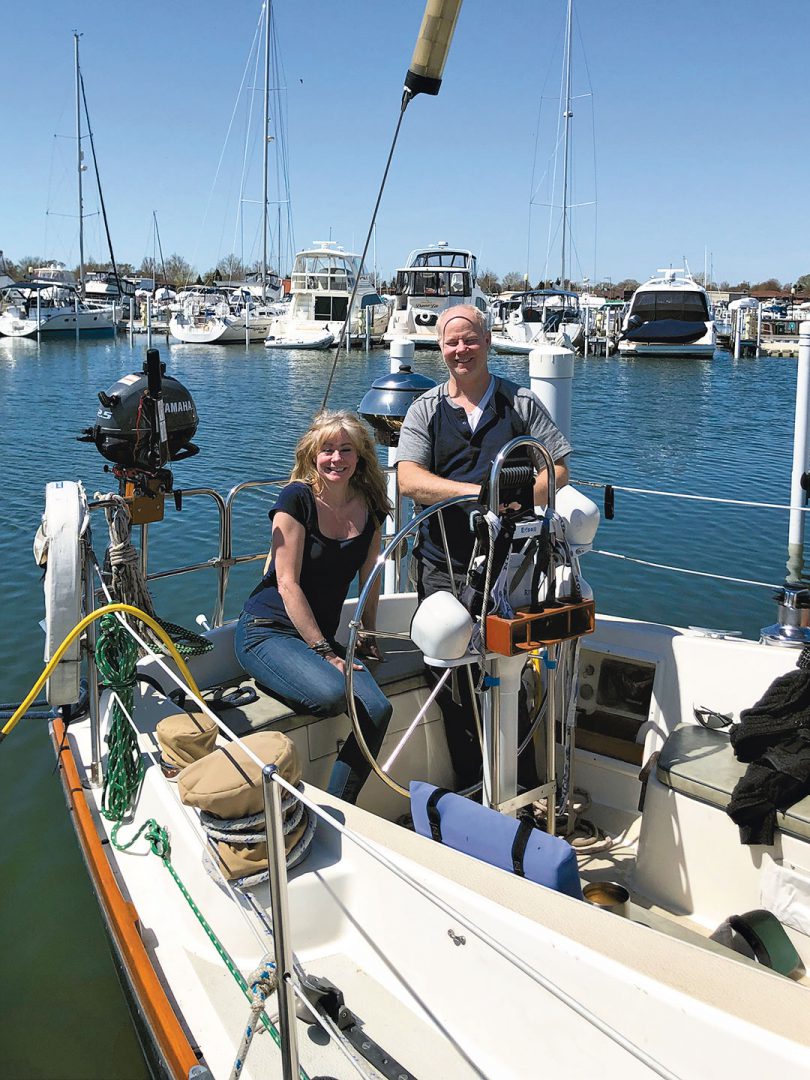
Erewhon caught Mitch’s eye. She was a 1986 Tartan 37 berthed near Cleveland. She was named after a fictitious Utopia featured in a Samuel Butler novel written in 1872. Erewhon derived from nowhere. Her hull was navy blue, her interior a rich patina of dark teak. Mitch saw in Erewhon a vessel he could sail on the Great Lakes and into the ocean on adventures not yet dreamed of. That July, the deal was sealed, and Erewhon was his.
The day Mitch and I planned to deliver Erewhon 35 miles to her new home port, it was hot and steamy. I waited quietly in the shade of boats up on jack stands. I did whatever Mitch instructed with as few questions as possible, to minimize his stress. His first sail on his own boat was monumental, for both of us.
The winds were not in our favor, and we thought long and hard about whether to leave. Were we ready, and was she? We decided the answer was yes, and Mitch warmed up the engine.
The marina was a close fit for any boat, and Erewhon was positioned against a seawall pointing inward to a dead end, with docks to our left and boats in front of and behind her. Mitch told me what he planned. We would back up and out of our current position, then back up into and between the two tight rows of docks on either side; pull forward, then a sharp right and we’d be heading into the main drag of the harbor.
I stood by with a boathook to fend off, if needed. I waited on the bow as Mitch started to maneuver. Backing up and pulling forward and out went well, though I was busy fending off the close boats. The trouble started with the backing up and between the row of docks on both sides.
Erewhon has an aggressive prop walk, and she was the largest boat Mitch had ever handled. As I ran from bow to stern pushing off docks and boats, I began to feel Mitch’s anxiety more than the heat. Then came the moment when I knew with complete certainty that his plan had gone to hell. I stood watching while he waited for forward momentum; there was no stopping what happened next. The timing was off, and as Mitch geared forward, Erewhon‘s reverse momentum kept her going back, crashing into the dock. Everyone around turned at the loud crunching and breaking of wood, in time to see Erewhon continue into the boat docked beyond, crashing into her side.
Someone from the marina jumped on board and helped Mitch steer us out of the mess, an embarrassment for any captain. With the marina hands at the ready, we uneventfully pulled into the gas dock. I headed for the bathhouse and stood fully clothed under the cold water until I felt myself cool down. I knew too well what was to come.
When I came out, Erewhon was back in her original berth, and Mitch was waiting in his car. We drove the two hours back to my car without a word.
I spent the next few weeks trying to talk Mitch off the ledge. He had lost all faith in his abilities. I had no idea what these feelings of defeat would do to him.
He had contacted an organization that takes donated boats, and I knew he might do it, even though he’d paid $32,000 for Erewhon and had owned her less than a month. Eventually, I talked Mitch into keeping Erewhon for one summer, after which he could sell her if he still felt she was too much. He enlisted the help of his friend, Tom, to sail her to her new home port.
That winter of 2014, Erewhon was stripped down to her shell and refitted to Mitch’s specifications, which made him a legend at the marina for overdoing an overhaul. He now knew her inside and out, but I knew he still harbored insecurities.
We spent the next summer sailing on the western shore of Lake Erie. Mitch’s confidence in docking began to grow, though while pulling out of the slip wasn’t bad, coming into the dock was always a test of his abilities and nerve. His uncertainties still provoked enough anxiety that at that point Erewhon’s fate remained in doubt.
In the spring of 2015, I took a job in Traverse City, where our sailing adventures had begun. Mitch left his little apartment and moved aboard Erewhon.
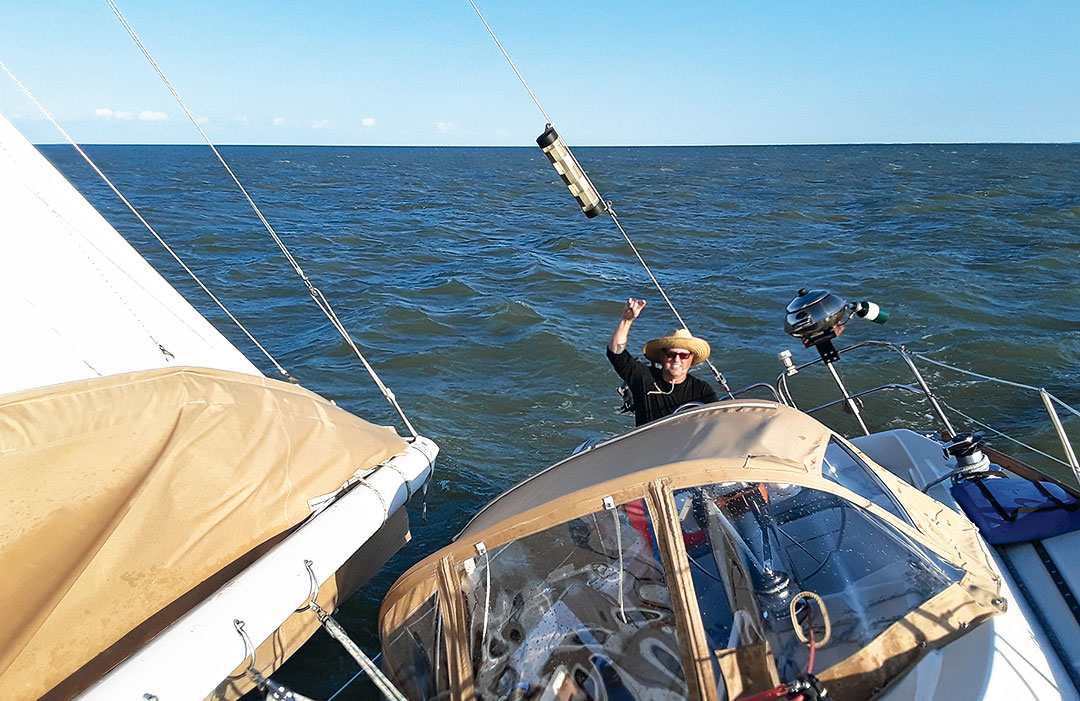
A year later, Mitch singlehanded Erewhon 500 nautical miles to Traverse Bay, with four stops along the way and one overnight sail. I joined him on a leg of the trip back. The day I jumped ship, the wind howled 23 knots and 6-foot swells were breaking. Mitch confidently pulled Erewhon out of the slip and left the sheltering waters of the harbor.
I watched from shore, waiting to see him raise the sails, hearing the loft of them in my head until she fell off and the wind filled them, and I could feel her settle into the waves. Mitch had her on a northeasterly tack, the wind to his face and the open waters ahead. In that moment, I knew with certainty that Erewhon was his, and he had found his polestar.

